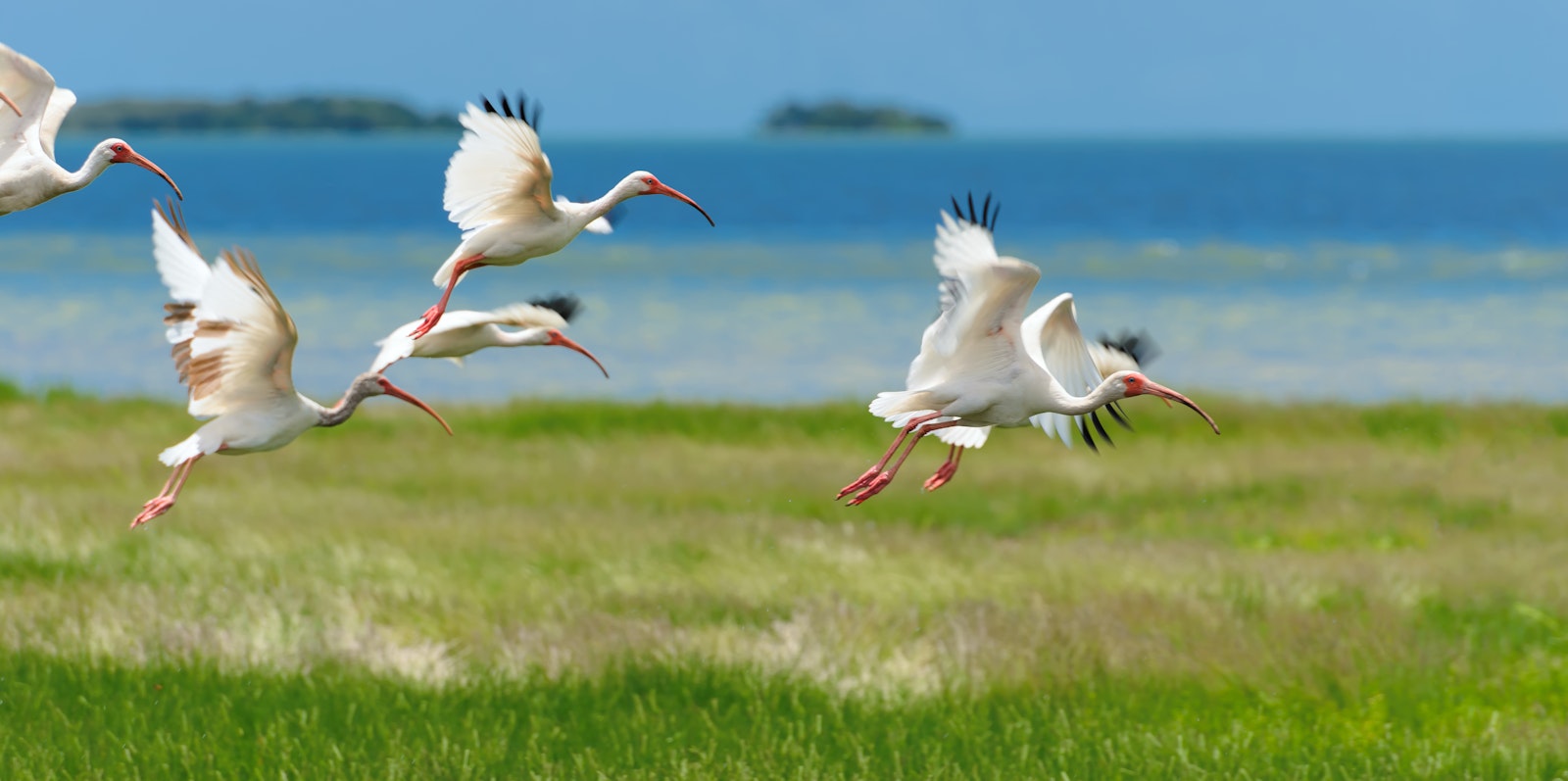Protecting the Ancestral Landscape of the Muscogee (Creek) Nation
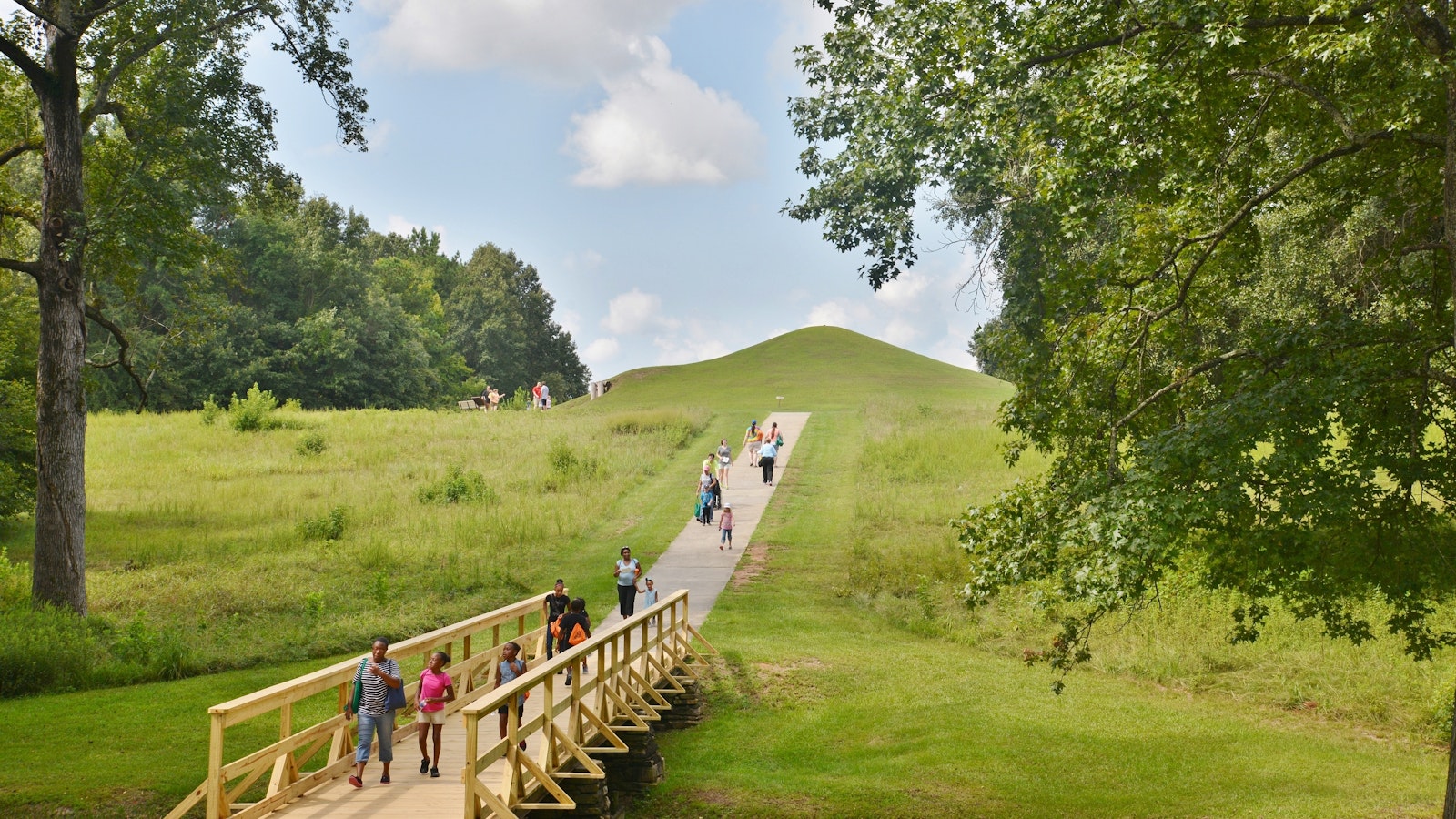
.
.
When Tracie Revis moved the nearly 900 miles from Okmulgee, OK to Macon, GA in 2022, it was a homecoming centuries in the making.
Her Muskogean and Yuchi ancestors who built a thriving metropolis in present day Georgia were forcibly moved to Oklahoma 200 years ago. While the Muscogee Nation’s government has been seated in present day Oklahoma since, their spiritual and cultural home remains along the Ocmulgee River.

A Muscogee and Yuchi lawyer and now director of advocacy for the Ocmulgee Mounds National Park and Preserve Initiative (ONPPI), Revis is back in the heart of her ancestral land to share the story of the Muscogean people and advocate for further protection of the land.
For Revis and others from the Indigenous tribes that once called the land home, the connection isn’t just historical.
“Our relatives are still there. Their footprints are still there. They're still there. And it's not just because they are buried there,” says Revis. “Their spirits are still there.”
Years before she moved to Georgia, Revis was visiting the park and walking out of the Earth Lodge when she caught the scent of one of the medicines the Muscogee (Creek) people still use today.
"That smell, it just immediately transformed me,” said Revis. “This is where they were. Imagine if you go to a city that used to be a bustling city and there's nothing there. But if you just close your eyes, you can hear the sounds. You can feel it."
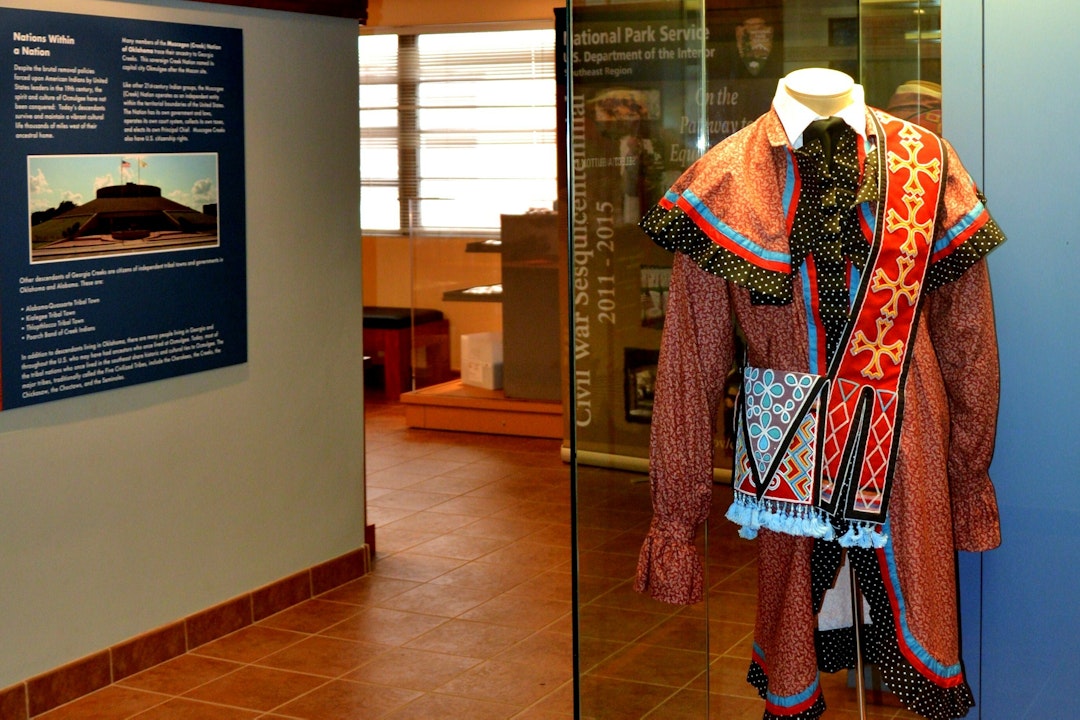
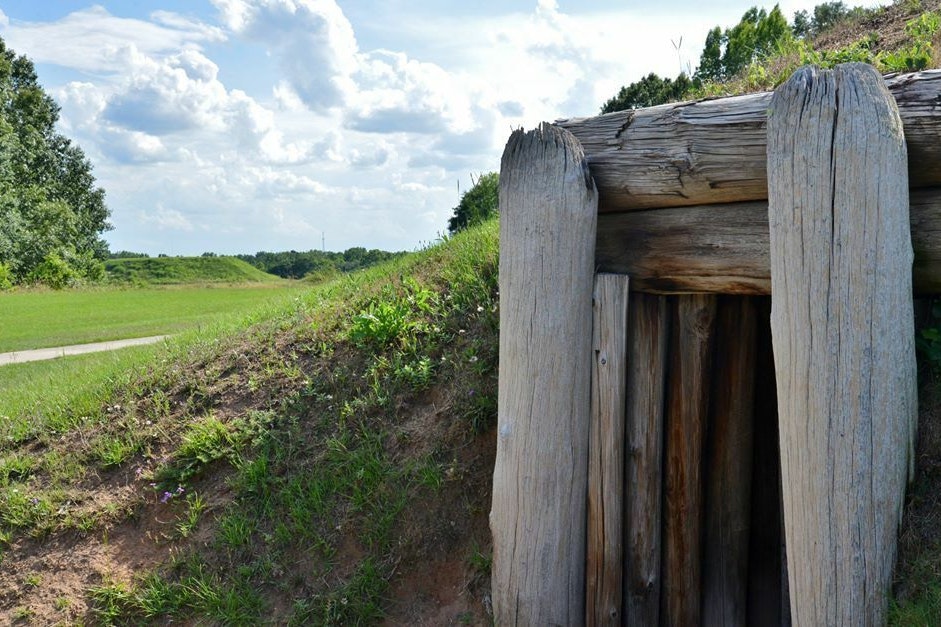
Revis and the nearly 100,000 others in the Muscogee (Creek) Nation can trace their ancestry to this land, which was once a bustling corridor and the heart of Muscogee culture with 60 interconnected cities.
The land was so central to Muscogee life, they continued to carve it out and preserve it for as long as possible despite a series of removal treaties in the early 1800s. It wasn’t until the last treaty in the 1820s that they finally ceded their last remaining land to White colonizers, including the land that became Ocmulgee Mounds National Historical Park.
More than Doubling the Size of the Park
Ocmulgee Mounds National Historical Park tells the story of the Muscogee (Creek) people — and so many others. A vibrant historical, cultural, archaeological, and ecological center, it’s one of the longest continually inhabited lands in the United States. Civilizations have called the plateau home for 17,000 years.
The park also protects the unique landscape of the meandering Ocmulgee River — a complex matrix of riparian forests, floodplain pools, pine hammocks, canebrakes, cypress-gum swamps, and mature upland forest. The river is joined by many smaller streams, creating an extensive network for wildlife to access different climate refugia and food sources. More than 200 species of birds, 80 species of reptiles and amphibians, 100 species of fish, and 50 species of mammals — including Georgia’s black bear population — call the forests along the Ocmulgee River home.
This effort is part of a broader community-based initiative to protect a green river corridor from Macon south to Hawkinsville — a distance of 47 miles. Creating a linkage to Ocmulgee Mounds National Historical Park and preserving additional miles of river will enable these species to access increased acres for food and habitat.
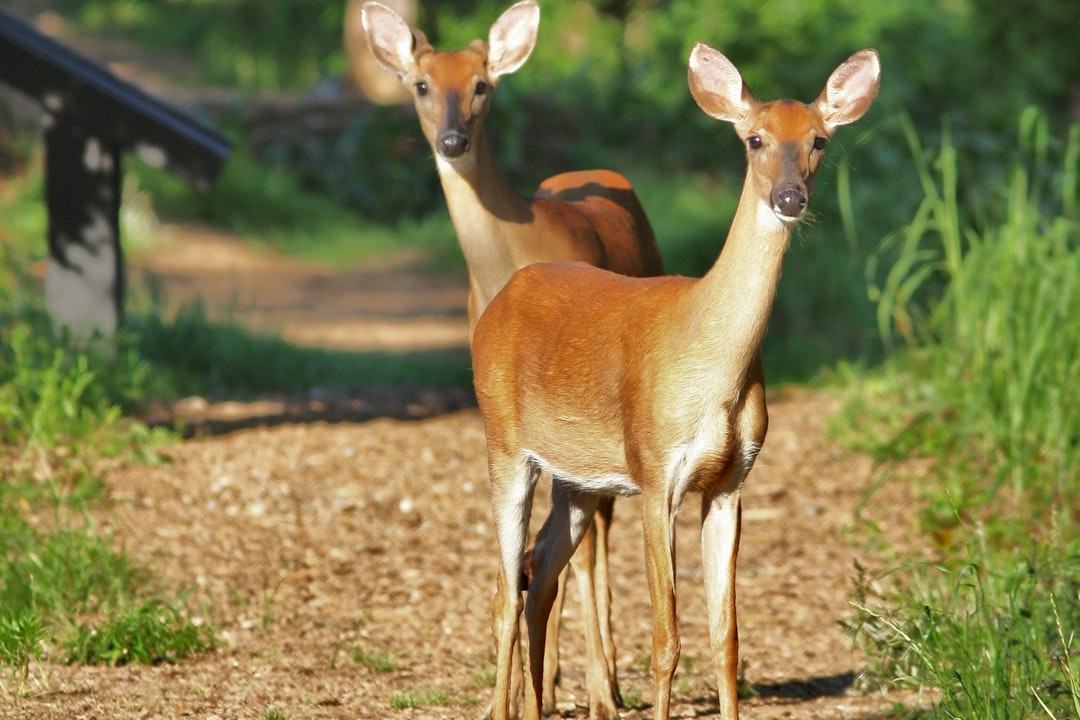

And today, even more of that land is now protected thanks to a massive effort to grow the protected area from 701 to over 3,000 acres.
The project is a collaborative effort to purchase the patchwork of private and public lands throughout the area and an opportunity to live out a co-stewardship model between the park and the Muscogee (Creek) Nation.
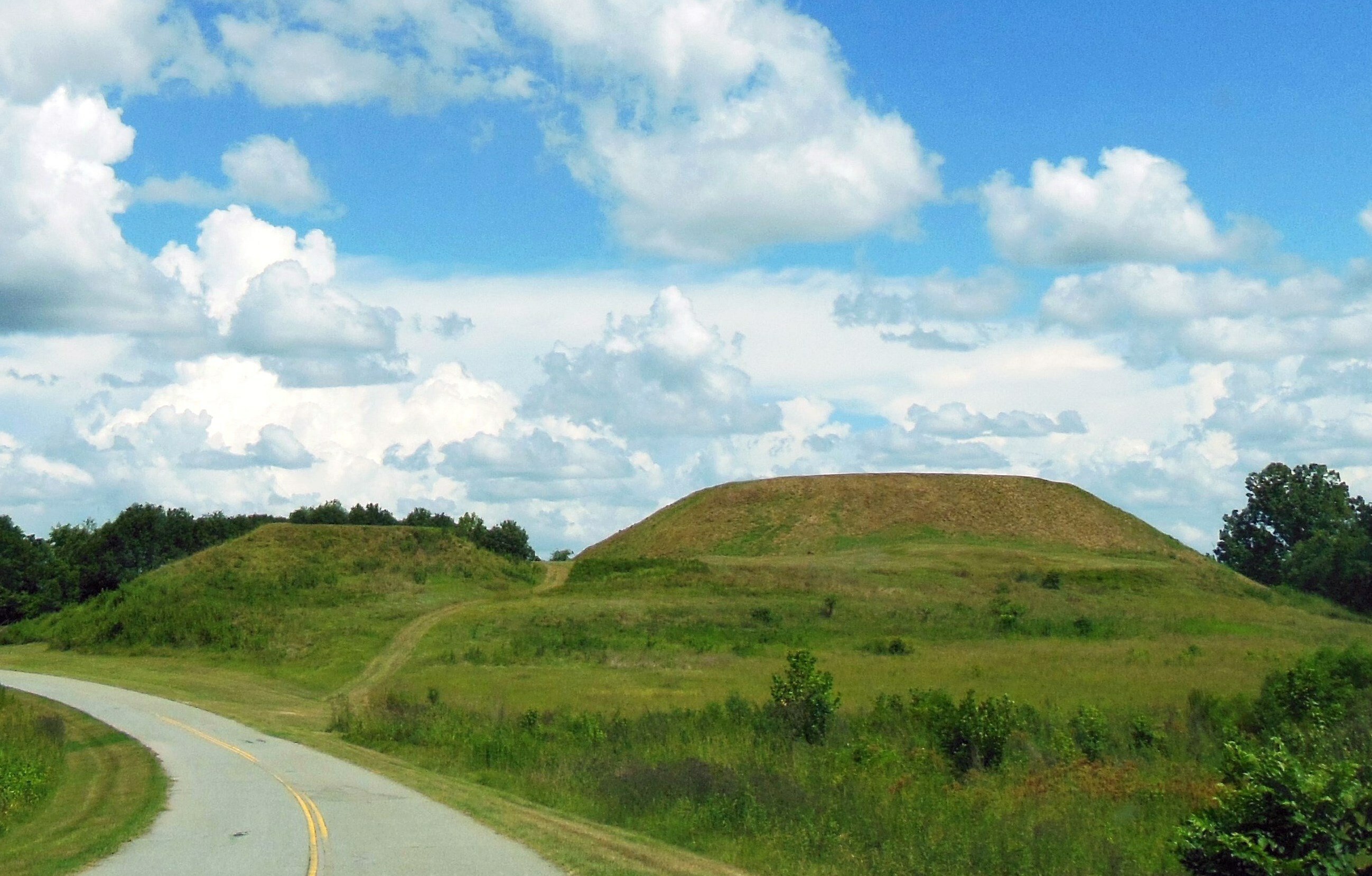
With the expansion of the boundary approved by a Congressional act in 2019, NPS is now leading the collaboration to purchase the additional land. In collaboration with NPS, the National Park Foundation (NPF) and local nonprofits are working to fast track the land acquisition process — ensuring the lands are secured and protected as quickly as possible.
Within the boundaries of the more than 400 sites in the National Park System, over two million acres remain privately-owned. To conserve the most significant and threatened lands in the park system and expand parks for all to experience and enjoy, NPF works with NPS and nonprofit partners to acquire these properties. Since its founding in 1967, NPF has added more than 155,000 acres across 73 national parks.
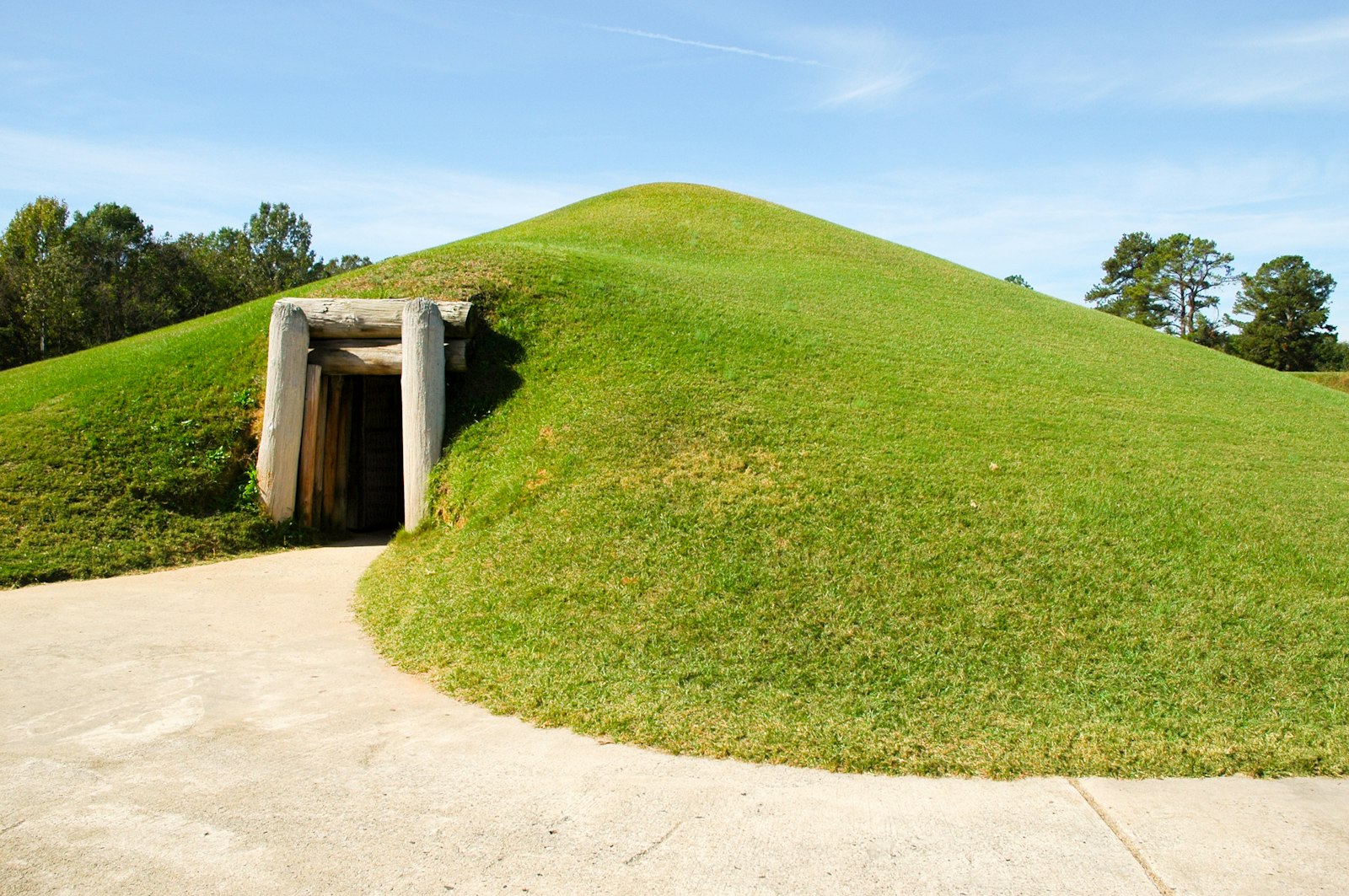
By The Numbers
-
17,000YearsOcmulgee Mounds National Historical Park is a prehistoric American Indian site, where many different American Indian cultures occupied this land for thousands of years.
-
3,000AcresThanks to a widespread collaborative effort to purchase private and public lands, Ocmulgee Mounds National Historical Park now protects thousands of acres.
-
430+SpeciesWell over 400 species of birds, reptiles, amphibians, fish, and mammals call Ocmulgee Mounds National historical Park home. NPS protections help ensure their habitat is protected well into the future.
That land acquisition effort is well under way at Ocmulgee Mounds National Historical Park — in early 2022, a 951-acre property was procured and in fall of 2022, an additional 250 acres were donated by Macon-Bibb County. NPS, ONPPI, NPF, Open Space Institute, the Knobloch Foundation, and the Peyton Anderson Foundation all worked together to secure these properties.
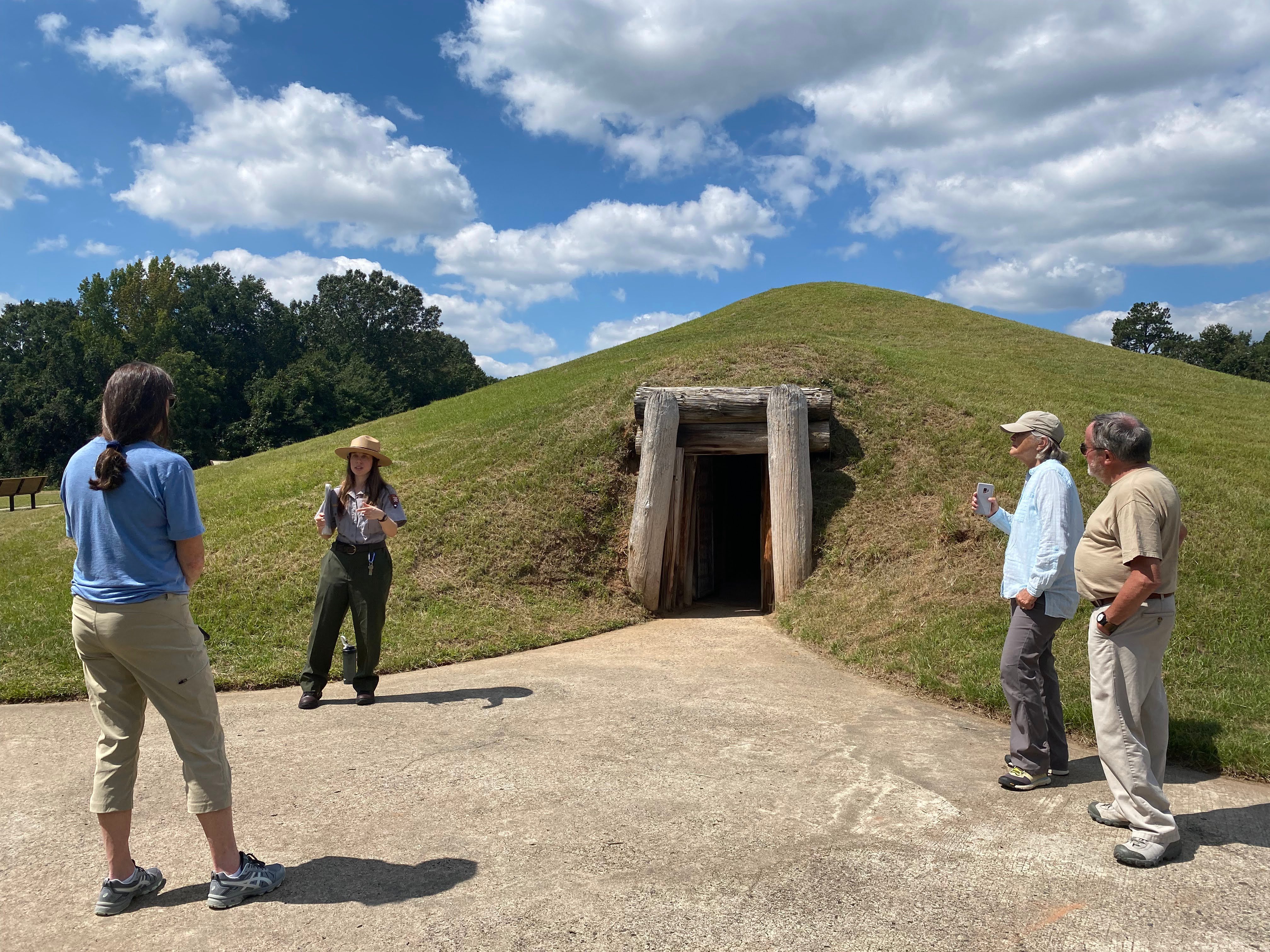
But land acquisition can be an arduous process. There are surveys, studies, and negotiations with private landowners as well as state and local agencies. More so than most personal residential land acquisitions, navigating the federal realty process is particularly complex. Every new property must comply with stringent federal standards for title, valuation, and environmental standards, resulting in significant due diligence work and closing costs. NPF helped fund this part of the process — allowing local nonprofits and foundations to focus their efforts on local fundraising for the actual land purchase.
“I assure you that the corporations that wanted to buy that land and zone it for industrial use were not going to cut a corner on cost. As a nonprofit you have to be as competitive,” says Seth Clark, executive director of ONPPI and mayor pro tem of Macon. “The project costs that the NPF grant backfills is invaluable. It's not just due diligence costs. The grant gave all of the nonprofit players the flexibility and ability to really come to the table to try to do the right thing.”
Co-Stewardship Throughout the Community
And doing the right thing is of utmost importance for a land that holds the beautiful history of a complex civilization as well as the scars of the Road to Misery, the Muscogee phrase for the Trail of Tears, and the histories of hundreds of thousands of enslaved people sold into the Deep South following the violent removal of Indigenous tribes.
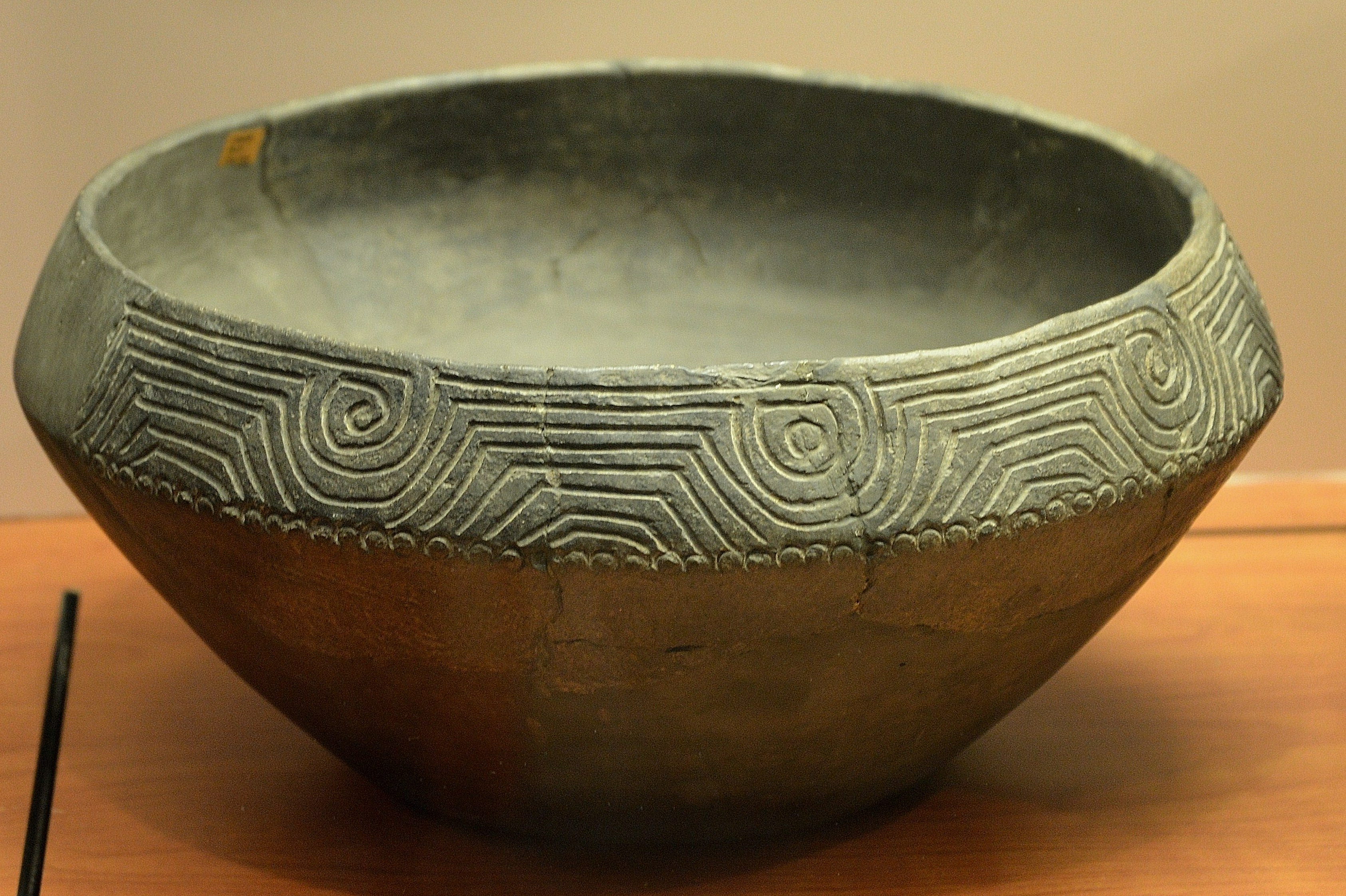
Parcels of land surrounding seven mounds were preserved as a national monument in 1936, but even so, archaeologists stripped that land of over two million artifacts. While efforts in the park and town of Macon to repair and re-establish relationships are ongoing locally, Interior Secretary Deb Haaland’s "Tribal Homelands Initiative” is also paving the way for a new co-stewardship model nationally.
The collaborative initiative is meant to improve federal stewardship of public lands, waters, and wildlife by strengthening the role of tribal communities in federal land management.
And the level of collaboration and co-stewardship at Ocmulgee Mounds National Historical Park is having ripple effects into the larger community. Today, the Muscogee (Creek) Nation flag flies at level with the American flag in Macon.
The flag is hugely symbolic as the city marks its 200 year anniversary of its charter this year — a milestone only made possible after the forced removal of the Muscogee (Creek) people.
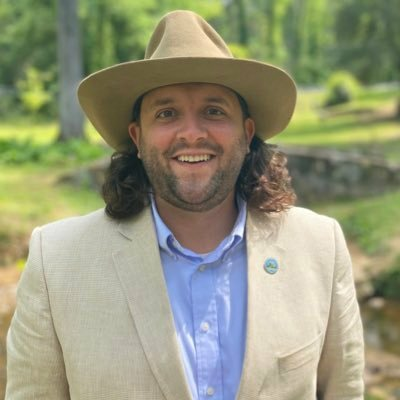
“The fabric of our community is so intertwined with the violent history of removal,” says Clark. “It's who we are. This act defined us and was etched on both our souls and the souls of the Muscogee (Creek) people. It has been for 200 years and will be for 200 more years.”
The flags are a visual representation of a path forward.
“Our sovereign flag flies over City Hall today in the land that we were meant to never come back to. That's really powerful,” says Revis. “That's the story that I want people to see. It's a story of resilience. And it's a story of partnership — what it looks like and what’s possible when we all come together.”
That collaboration is just the beginning. On the heels of the successful park expansion, the Muscogee (Creek) people, ONPPI, and the park are continuing to work on additional land protection in and around the river corridor.
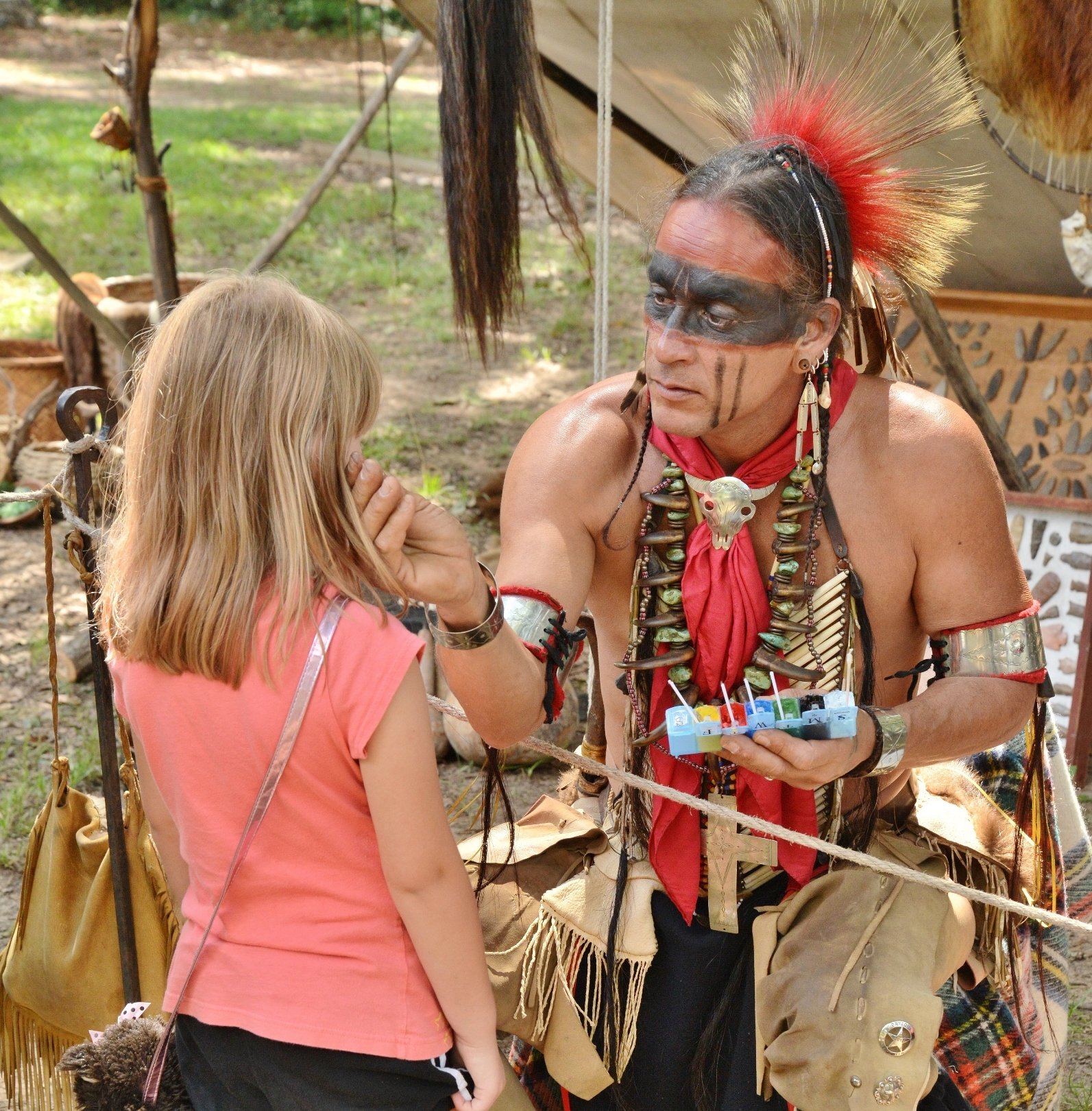
Potential additional changes in the park are on the horizon as well. The park could be designated as a national park and preserve as early as this year. With that new designation, the park could expand again and potentially acquire and protect an additional 85,000 acres. That decision currently sits with Congress and has bipartisan support. If successful, Ocmulgee National Historical Park would become Ocmulgee Mounds National Park and Preserve — the first national park co-managed by a removed tribe.
“When people visit the land, if they get the full experience and have a chance to be here, I really hope that they glean the fact that this was a full civilization. It was an advanced people who lived here and maintained this lifestyle for thousands of years,” says Revis. “And there is a violent history, but these are a people of survival who still exist, who are still strong today.”
Our Work
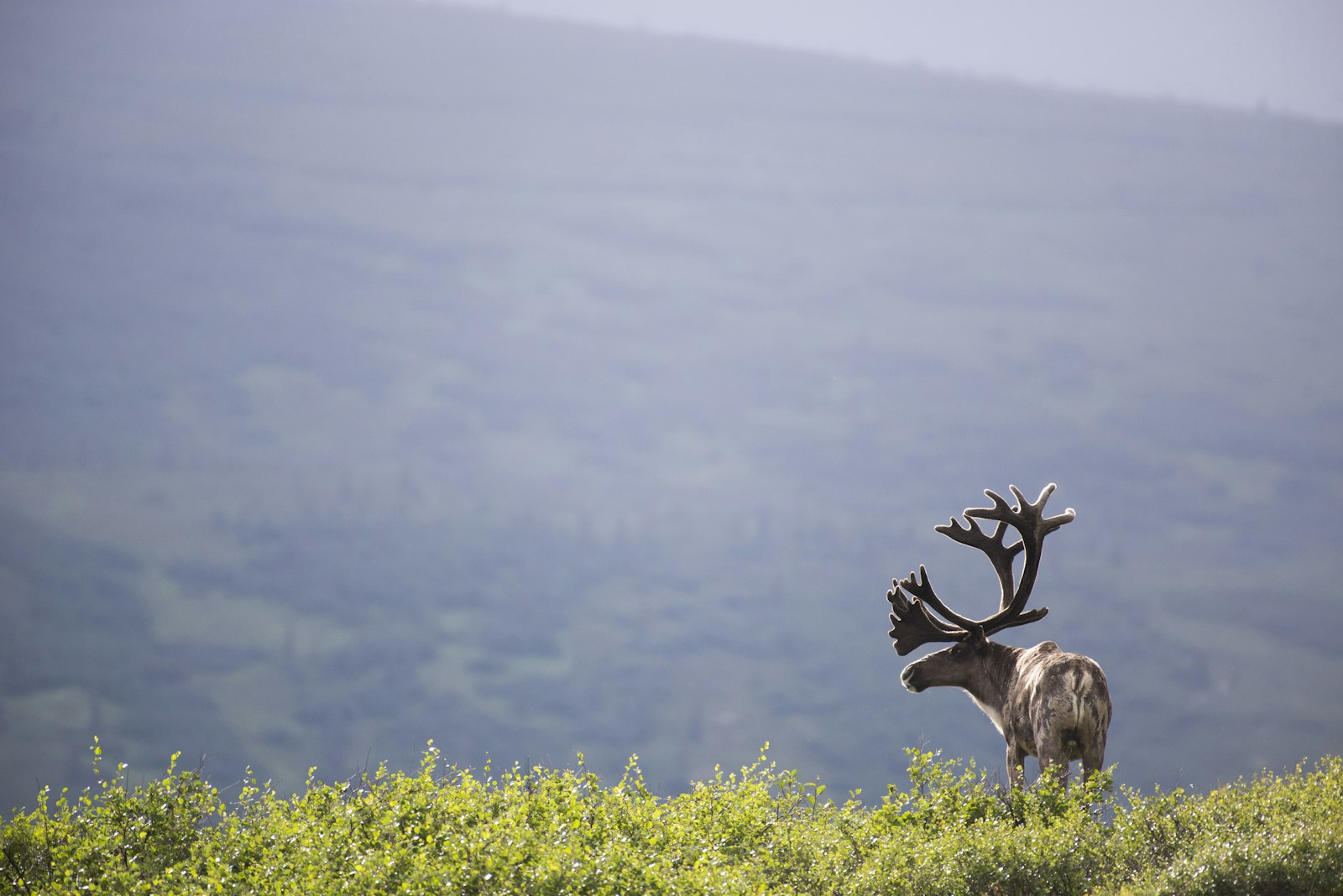
We Can’t Take These Resources for Granted
For us, the national parks are a source of beauty, history, and inspiration. For the creatures and plants within them, they are a life source. We’re calling on you to help us protect and restore these vibrant and vulnerable landscapes. See how you can champion our conservation efforts by donating to the National Park Foundation.
